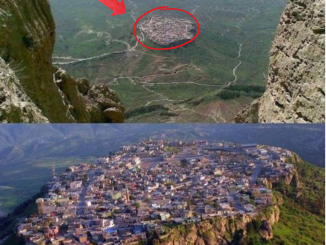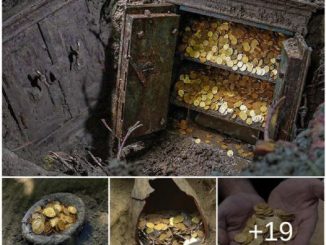A Glimpse into Neolithic Beliefs
The Seated Woman of Çatalhöyük represents one of the most fascinating artifacts unearthed from the Neolithic age, shedding light on ancient religious practices and societal structures. Discovered in Çatalhöyük, a site known for its well-preserved Neolithic village in modern-day Turkey, this 8,000-year-old baked-clay figurine has intrigued scholars and laypersons alike. Its depiction of a corpulent female figure, seated authoritatively between feline-headed armrests, invites us to ponder the roles of fertility, divinity, and matriarchy in early human civilizations.

Deciphering the Goddess
Central to the mystery of the Seated Woman of Çatalhöyük is the identity and significance of the figure it represents. Historically perceived as a Mother Goddess—a symbol of fertility and earth’s bounty—the figurine is seated in a posture suggestive of childbirth, flanked by feline figures that hint at power and protection. This Mistress of Animals motif underscores humanity’s deep connection to nature and the divine feminine’s role in ensuring balance and prosperity. The figure’s corpulence was likely revered as a sign of health and fertility, symbolizing an abundance of resources and well-being.
This 8,000-year-old baked-clay figurine represents not merely the artistic expression of an ancient people but also offers insight into the veneration of feminine figures within early agrarian societies. Discovered in modern-day Turkey, this enigmatic artifact beckons us to delve deeper into its origins and the meanings it might convey about the people who created it.

A Shift in Interpretation
Recent scholarly debate has offered an intriguing reinterpretation of the Seated Woman of Çatalhöyük. Some experts now propose that rather than depicting a deity, this figurine may represent a high-status elderly woman within the Neolithic community. This theory suggests that it celebrates the social hierarchy and the veneration of wisdom and experience, highlighting the prominence and respect accorded to elder women in Çatalhöyük society. Such a perspective broadens our understanding of Neolithic social structures, suggesting a community where power and reverence could be achieved through age and wisdom, alongside or instead of fertility and motherhood.

The Legacy of Çatalhöyük’s Seated Woman
The Seated Woman of Çatalhöyük offers invaluable insights into the spiritual and societal fabric of one of the earliest known human settlements. As we marvel at this figurine, we’re invited to reflect on the complexity and sophistication of Neolithic belief systems and social orders. The dual interpretations of the Seated Woman—as a deity or as an elder—remind us of the multifaceted roles women have played throughout history, either as symbols of life-giving force or as repositories of communal wisdom and leadership.

Conclusion: A Portal to Ancient Discoveries
The study of artifacts like the Seated Woman of Çatalhöyük serves as a gateway to understanding our ancestors’ lives, beliefs, and societal organization. It compels us to consider the profound ways in which humanity has sought to express its deepest concerns—fertility, survival, social cohesion, and the role of the divine. As we continue to unearth and interpret ancient artifacts, we not only uncover the mysteries of bygone eras but also gain insights into the universal themes that have shaped human history. Through these ancient discoveries, we connect with the enduring quest for meaning, belonging, and understanding that defines the human experience.
In the broader spectrum of ancient discoveries, the Seated Woman reminds us of the continuous thread of human curiosity and the desire to understand the world through the creation of art and symbols. Each artifact uncovered from the dust of ages, like the Seated Woman, provides not just a glimpse into the past but also a mirror reflecting the enduring aspects of human nature. As we continue to unearth and study these treasures, we weave together the fragmented narratives of our shared heritage, celebrating the depth and diversity of human history.



